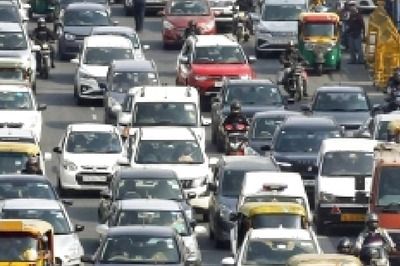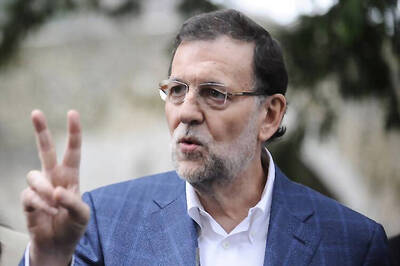
views
One of the perks of being the United Nations peacekeepers is that you get to flaunt and flash Tiranga in more than one ways. All peacekeepers display the miniature flag of their country on their chest above their medals. In addition, we wear a convex badge with inscription ‘INDIA’ on it, on both our sleeves. In my first UN peacekeeping mission, called the UN Mission in Ethiopia and Eritrea (UNMEE), I was Chief Logistics Officer and had a conical corner office on the fourth floor of the Green Building made by South Koreans in Asmara, the capital of Eritrea. Incidentally, both Asmara and Addis Ababa are located on Ethiopian Plateau that runs North South in the middle of both countries. Asmara was built by contemporary young architects from Italy in 1920s. It has a population of one million, which is one fourth the population of Eritrea. Both the capitals enjoy good weather throughout the year unlike the surrounding desert towns. I bought table sized crossed flags of UN and India from Gopi Nath Bazaar, Delhi Cantonment and displayed them proudly on my official table.
Incidentally, in the UN system, the importance of a branch or an official is known by the floor on which he works. The Secretary General’s office is located on the 36th floor in the UN building opposite the First Avenue in New York. Similarly, in UNMEE, we were housed in a six-floor building with the Special Representative of Secretary General (SRSG) and his political advisors on the top floor and Force Commander and his operational team on the fifth floor.
Between the Green Building and our Staff Officers Camp was the only five-star hotel of Eritrea, Hotel Intercontinental, which displayed flags of select countries. As the Country Senior, I ensured that whenever an Indian dignitary stayed in the hotel, they also displayed the Tiranga for the duration of the visit. Later when the British Force Commander was replaced by an Indian, Maj Gen Rajinder Singh, for the duration of one month that he stayed in the hotel, the Tiranga was continuously displayed.
In my second tenure with the United Nations as the Head of the Mission and Force Commander of United Nations peacekeeping mission in Golan Heights (UNDOF) from 2012 to 2015, I displayed the full-length Tiranga alongside the UN Flag in my office. In addition, I had the flags of all Troop Contributing Countries along with the UN flag flying outside my residence. The Tiranga had the rightful place by being immediately on the right of the UN flag at the centre. The pleasure was doubled when the Pakistani Military Advisor from UN Headquarters, New York, visited my office.
The 14 Imperial Cavalry Brigade comprising of Jodhpur Lancers and Cavalries of Mysore and Hyderabad lead by Maj Dalpat Singh had liberated Haifa town in Palestine (now Israel) from the Ottoman Empire in the World War I. The Israeli people hold this brave action of Indian troops in very high esteem. The Indian Embassy in coordination with the municipality of Haifa town holds a function every year on September 23, the Haifa Day, and honours the Indian soldiers at Haifa Cemetery. I was the Chief Guest for three consecutive years. It was exhilarating watching Tirangas along with the UN and Israeli flags displayed all around the cemetery.
On June 6, 2013, certain Armed Opposition Groups (AOGs) including Al Nusra and ISIS-affiliated groups attacked the Syrian side of the only crossing place between Syria and Israel; at Quinnetra on Golan Heights, killed several Syrian soldiers and took a few as prisoners. The intense battle continued for several hours with exchange of heavy fire including mortar and anti-aircraft gun fire. As luck would have it, I, as the Head of the Mission and Force Commander, was in Camp Zuaoni on the Israeli side, which is in the vicinity of this crossing place. Some of the Syrian Arab Armed Forces (SAAF) fire from the East onto the AOGs came onto the United Nations’ base Camp Zuoani and the neighbouring Israeli Defence Forces (IDF) posts. Three anti-aircraft rounds hit the Force Commander’s hut but the Tiranga kept flying high. Luckily, by then, I was not in the room and was coordinating operations in the Joint Operations Room.
According to the practised drill, on sounding of the alarm, UN peacekeepers in Camp Zouani moved into the shelters that were created after the 1973 Arab Israel War. The Senior Management and the Order Group moved into the Joint Operations Centre where the latest situation was painted to me and we viewed all our options. Immediately, after giving instructions to the Chief of Staff (COS), I moved to meet my Israeli interlocutor from IDF, the local holding divisional commander. The main thrust of the meeting was my persuading Israeli commanders to show restraint and not retaliate because of some rounds landing on the Israeli side. I stressed on the fact that these rounds were fired upon the AOGs in the buffer zone and were not meant for targeting the Israelis. Seven out of 10 times, the Israelis would listen to me but on two or three occasions they would first retaliate and then report to my staff. My visit was also meant to convince the Israeli commanders to open an ad hoc crossing place in the North as I had to cross over to the Syrian side to bolster the morale of the UN Positions in close proximity of the encounter.
A week later, the AOGs were counter attacked by SAAF and the Crossing Place was reopened. I was the first person to cross over to get the actual picture. What I witnessed was the total destruction of the SAAF post by the rebels with blood strains splashed on the ground and the walls. My attention immediately went to a half burnt miniature Tiranga lying on the floor. I immediately picked it up and instinctively put it next to my heart. In the UN system it is quite common for peacekeepers to exchange country flags and probably the Indian contingent commander had gifted this flag to the Syrian post who had proudly displayed it on their table along with the Syrian flag. I also went to the spot from where the anti-aircraft guns were fired and saw hundreds of empty shells lying there. I picked up three of them; symbolically taking them as the ones which had hit my residence. The half burnt Tiranga and these 14.7 mm rounds are still my prized possession.
Gen IS Singha was the Head of the Mission and Force Commander of the UN peacekeeping mission at Golan Heights between Syria and Israel from 2012 to 2015. The views expressed in this article are those of the author and do not represent the stand of this publication.
Read the Latest News and Breaking News here




















Comments
0 comment